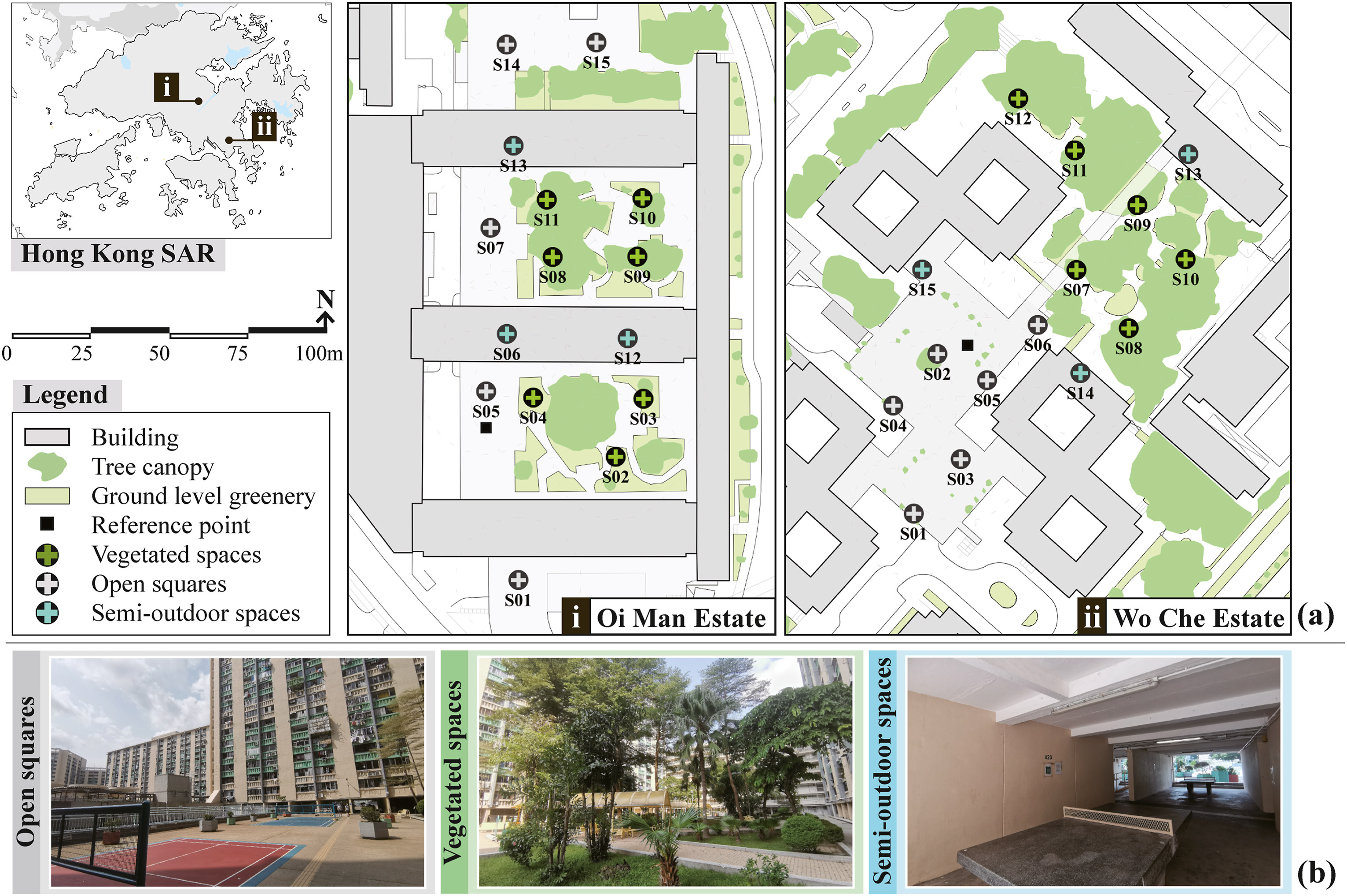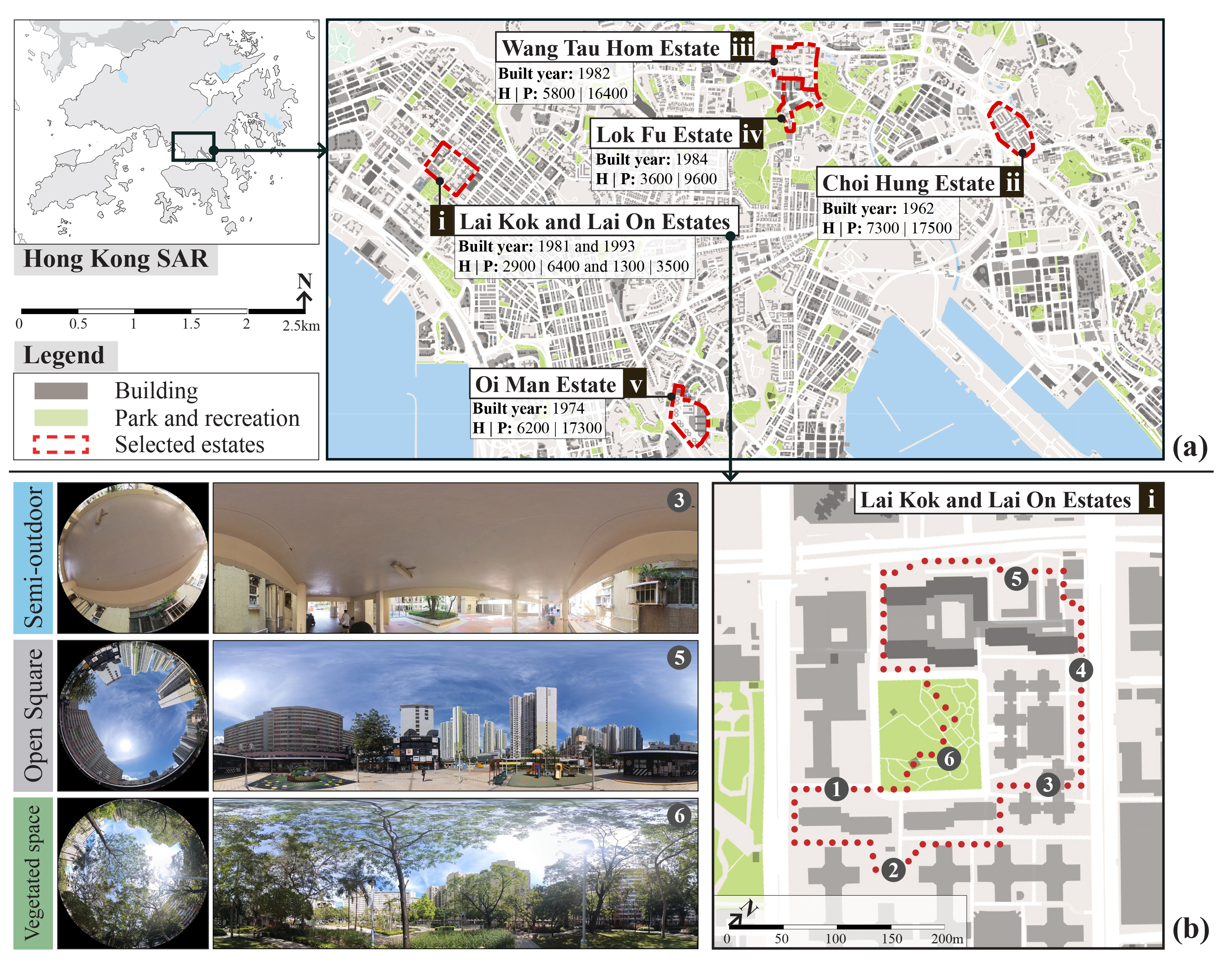Diversity of summertime thermal experiences in residential public spaces in Hong Kong
Published in The University of Hong Kong, 2025
This ongoing PhD project is aimed to assist evidence-based design of future-heat-resilient public spaces. It will discuss how the diversity of thermal environment can be created and utilized to enhance the thermal experiences in outdoor area.
Diversity of microclimate conditions under extreme heat
This work documents the diversity of microclimate conditions in typical residential public spaces under extreme heat through field measurements. It reveals that even under extreme heat, thermally comfortable spaces exist.

(a) Locations of study sites and measuring points, and (b) typical examples of three types of public spaces.
Refer to one published article derived from this section for more detail.
Diversity of summertime thermal and environmental perceptions during outdoor walking
Following the aforementioned work, this section evaluates the human perceptions when walking along different types of public spaces in summer. Combining mobile measurements, field survey, and physiological parameter measurements, this section builds the pathway among the built environment, human physiological parameter, and thermal and multisensory environmental perceptions.

(a) Locations of selected PHEs, and (b) one example of walking routes and three stopping points belonging to the three types of public spaces.
Refer to one published article derived from this section for more detail.
Beating the heat: Cooling landscape measures for typological outdoor spaces in Hong Kong’s public housing estates
Taking Hong Kong’s public housing as the targeted urban context, based on a review of outdoor cooling measures for subtropical regions, an inventory including ten feasible measures to cool the typological public spaces, i.e., open spaces, semi-outdoor, and vegetated spaces, is proposed. These measures target key microclimate parameters that influence thermal comfort, e.g., reducing solar radiation, enhancing pedestrian level ventilation, etc. We advocate for the integration of these cooling strategies in future public space design to ensure both spatial diversity and improved thermal comfort, enabling residents to better adapt to increasing future extreme heat conditions.

Typological public spaces in PHEs: Open, vegetated, and semi-outdoor spaces, illustrated with Lai On and Lai Kok Estates, Cheung Sha Wan
Refer to one magazine article and one design guidebook related to this section.
Funding information
This project is funded by 2021/22 Theme-based Research Scheme (T22-504/21-R).
